One of the most striking differences between India and the countries I've lived in the western world is how people carry themselves. There's a striking difference in the demeanour they have - right down to how people walk and the expressions they wear.
I spent a lot of my time just wandering around with my camera. One of the most striking places I spent time in was the commercial and shopping district of Rajkot; it's an old part of town and here life continues on in part how it may have been doing so for at least decades, if not longer.
I'd made the foolish assumption that since I was on holiday, I wouldn't need to pay much attention to my appearance. I left my shaving kit at home, and quickly sprouted a stubbly, ugly beard. While most Indian men sprout an impressive mustache under the nose (my cousin assures me that it's a sign of manliness), few men in Rajkot under retirement age have a full beard. Along with my awkward demeanour, the beard in particular made my stand out from other Indian guys, and I was the subject of many a stare as I walked around. However, since everyone was looking at my face, they weren't seeing what I did with my hands. In them, I kept my camera and I shot almost exclusively from the hip. Each time I saw something I'd fire off five or six quick shots in the rough direction of what I saw while my subject was still working out where I was from, and moved on before they worked out what was going on. I'd never really shot from the hip before, and it was a glorious experience.

It's common to see guys on corners and shopfronts just watching the world go by. I've got no idea what they're doing - are they between jobs, taking a break, or just hanging out? - but there are an awful lot of them. The thing that stands out for me, though, are the strong expressions they wear as they watch the world go by - a sort of focused scrutiny the minute a new satellite enters their orbit.

Note the bloke on the far left - he's sipping on some chai from a saucer before the start of the working day.
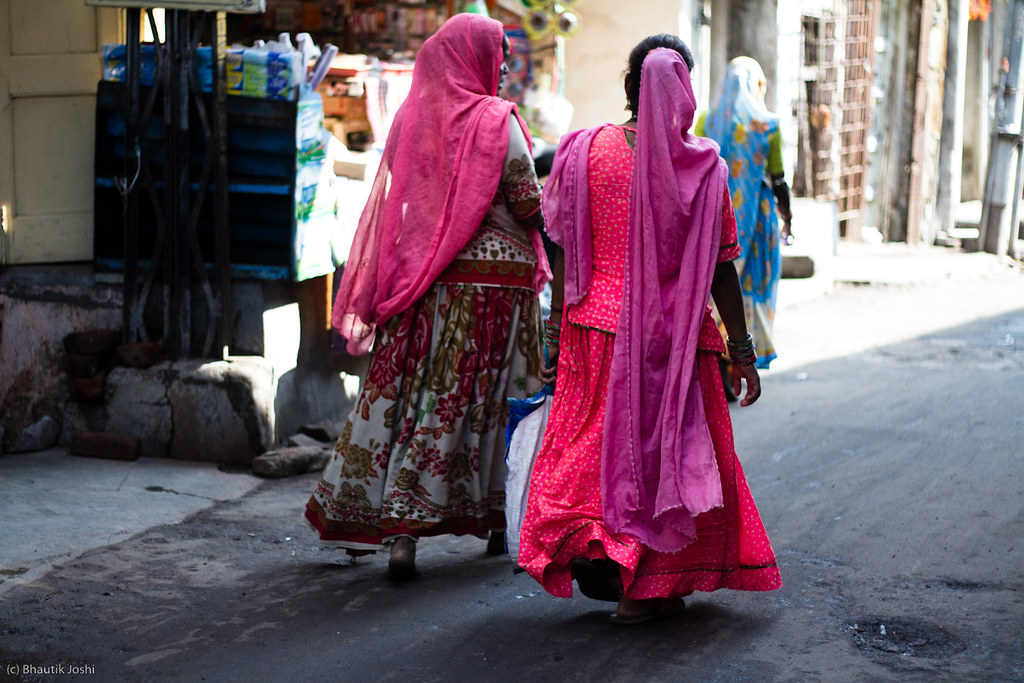
Saris and Punjabi dresses are the dominant mode of dress for ladies in India; the country is a centre for textiles and bright, vivid materials are cheap, accessible and still enormously popular after hundreds (thousands?) of years. They're also worn with some flair - ladies around here don't just walk, they sashay from one place to the next.
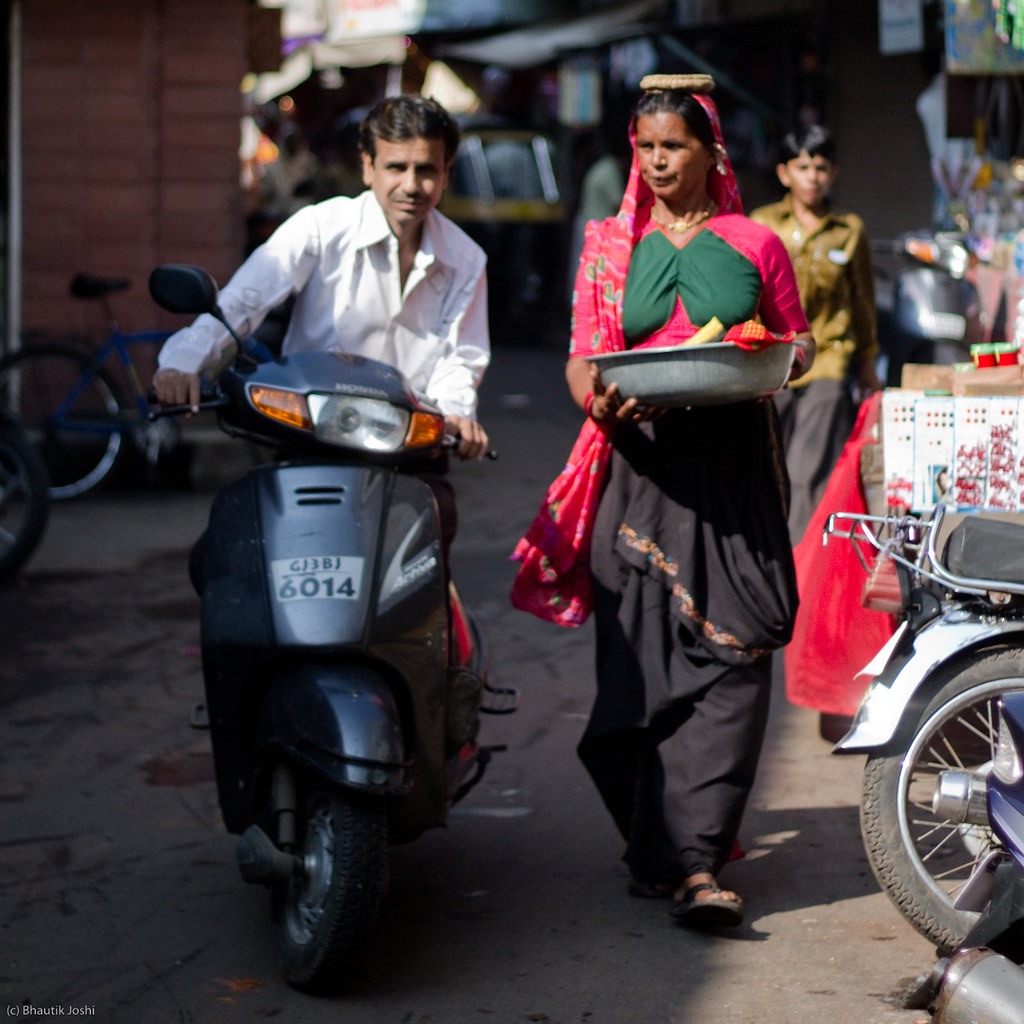
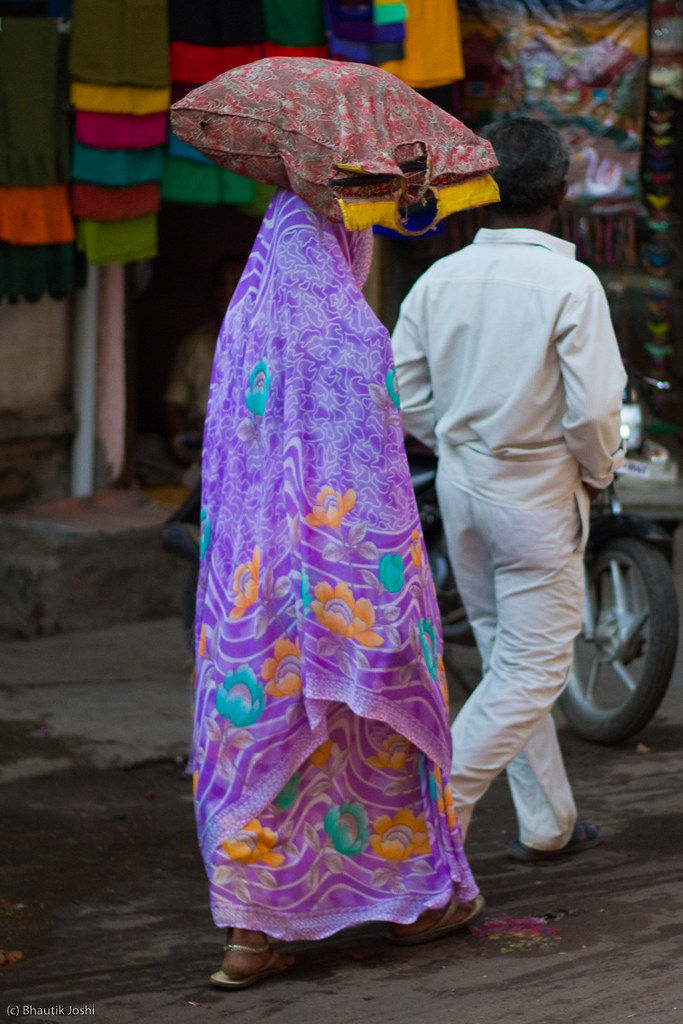
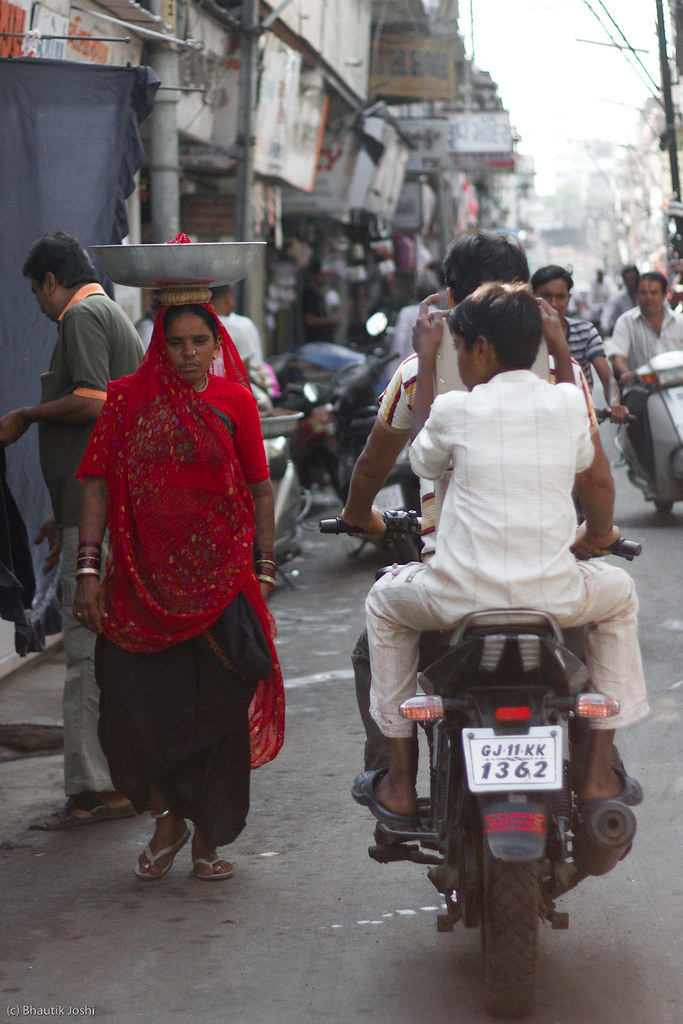
It's not uncommon to see ladies carry loads on their heads. It looks enormously difficult; most impressive is that some seem to be able to do it without using their hands at all.
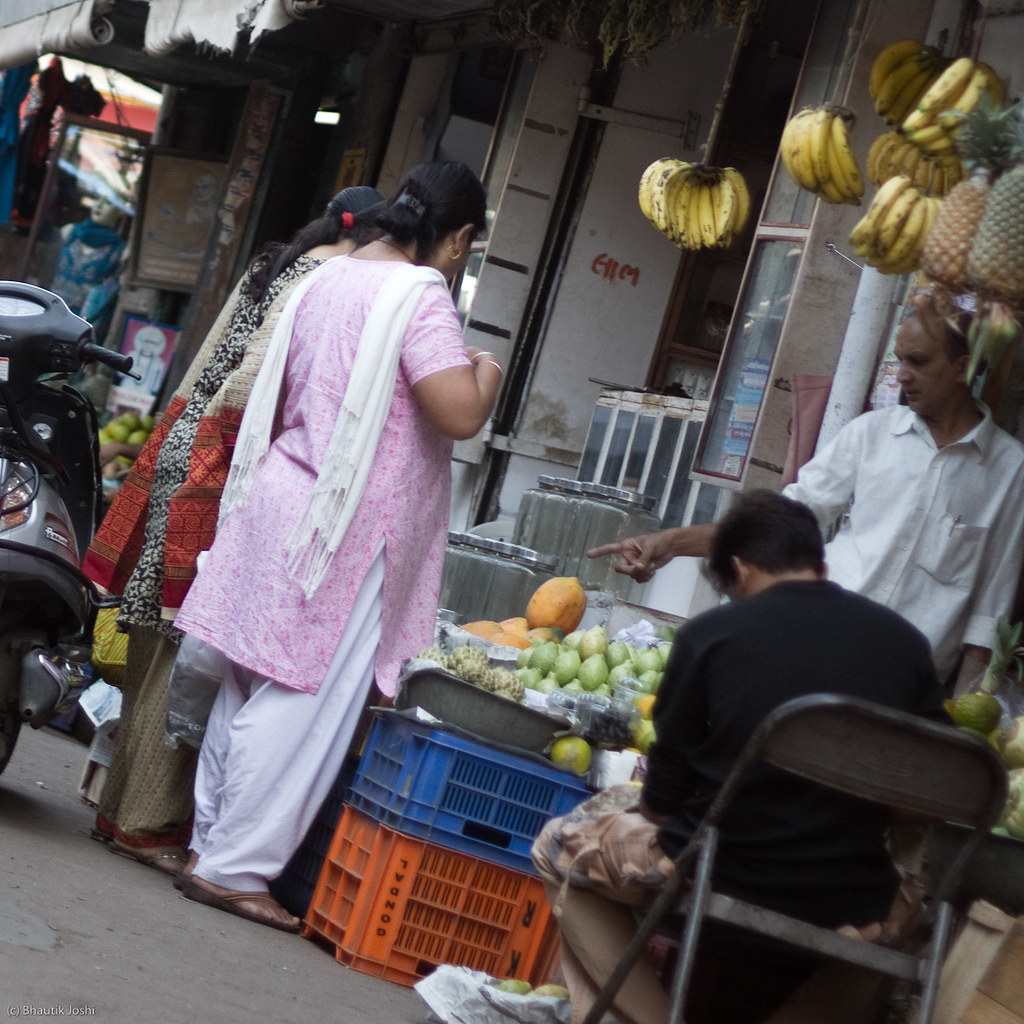
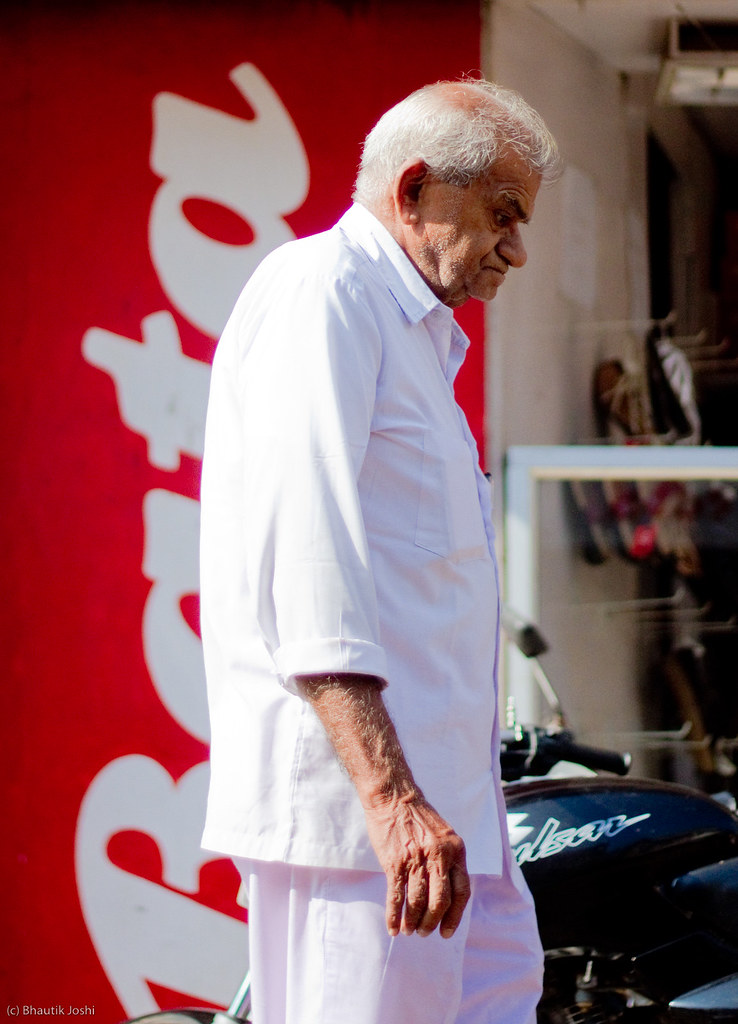
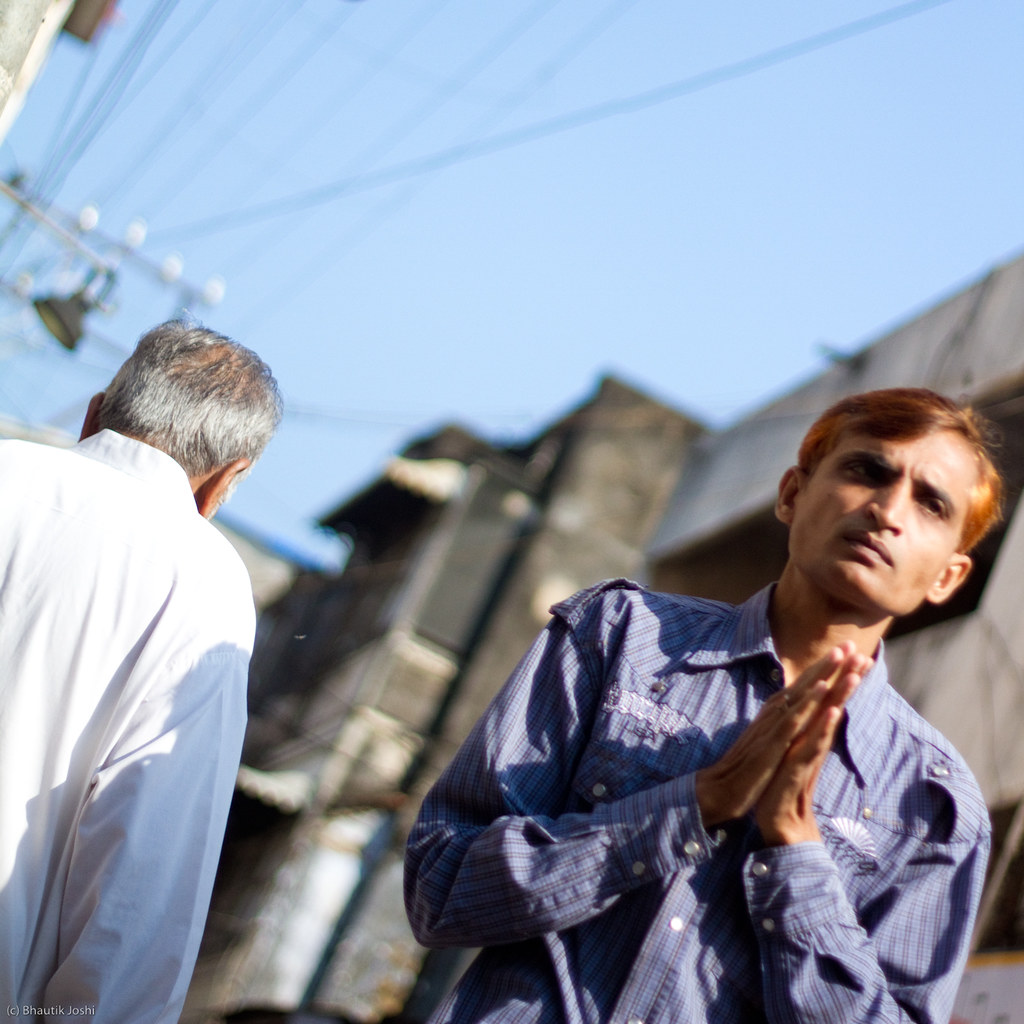
Wandering around the streets, I saw a lot of gentlemen who appeared to be praying as they were walking. They'd stride purposefully along, looking at the skies, hands clasped together. After seeing a few individuals doing this, I asked my cousin what was going on and he informed me that they were actually rolling tobacco.
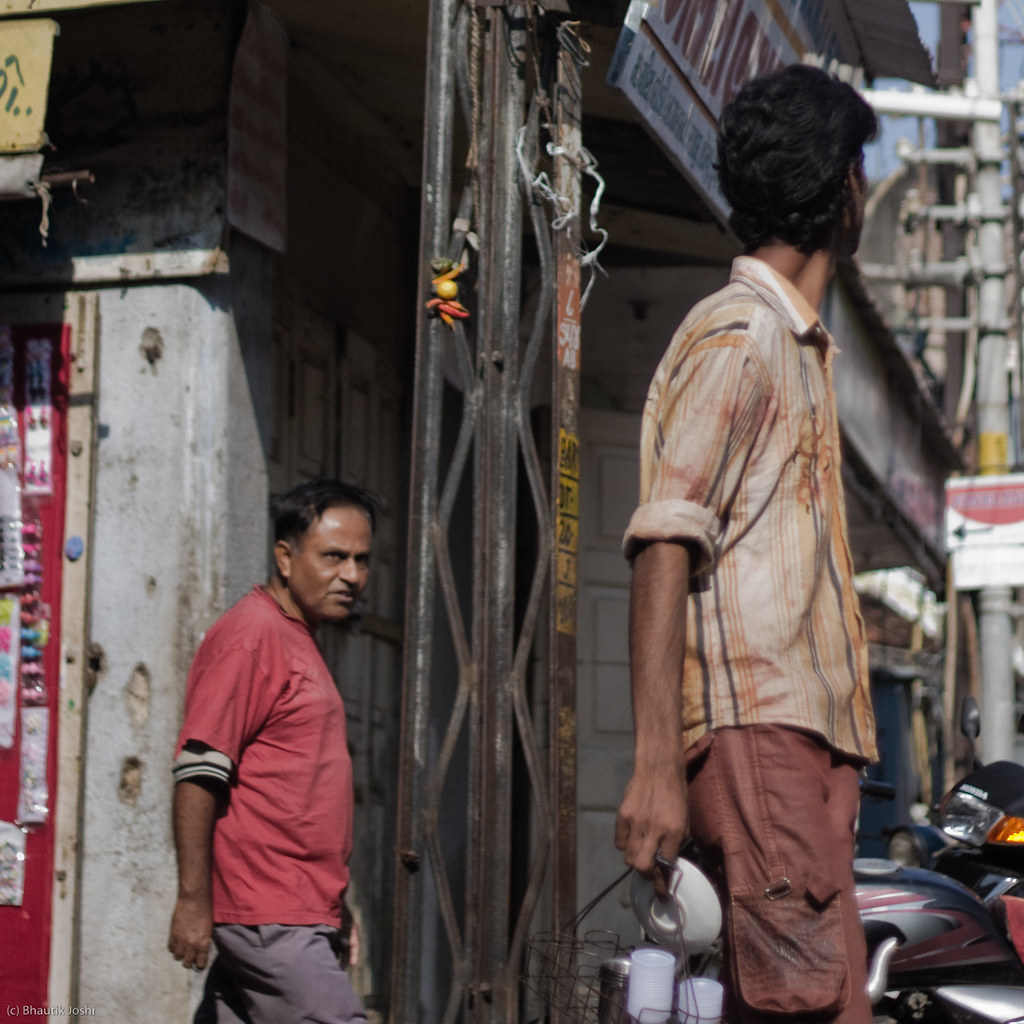
The gentleman in the foreground is a chai-wallah; in his right hand you can see the saucer and cups, and in his right he's got a pot of tea. Working neighborhoods seemed to each have their own chai-wallah (sometimes there were pairs of them) and shopkeepers would call on them to get their caffeine fix at the start of the day.
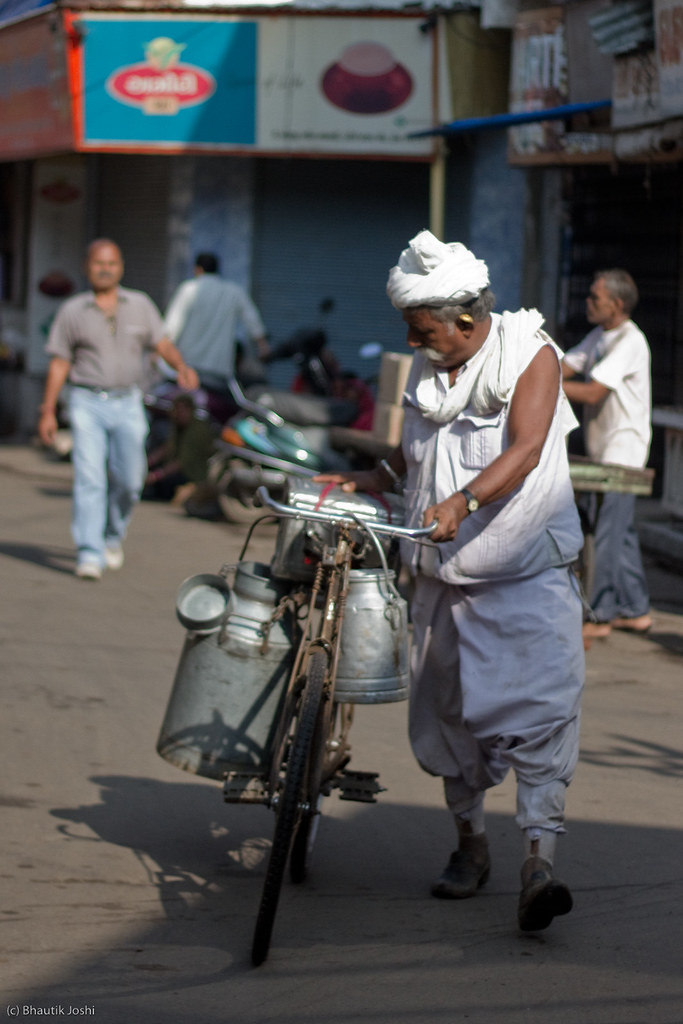
Same as the chai-wallahs, there were also people who delivered milk and cream. This was often carried by hand, or, sometimes by bicycle.
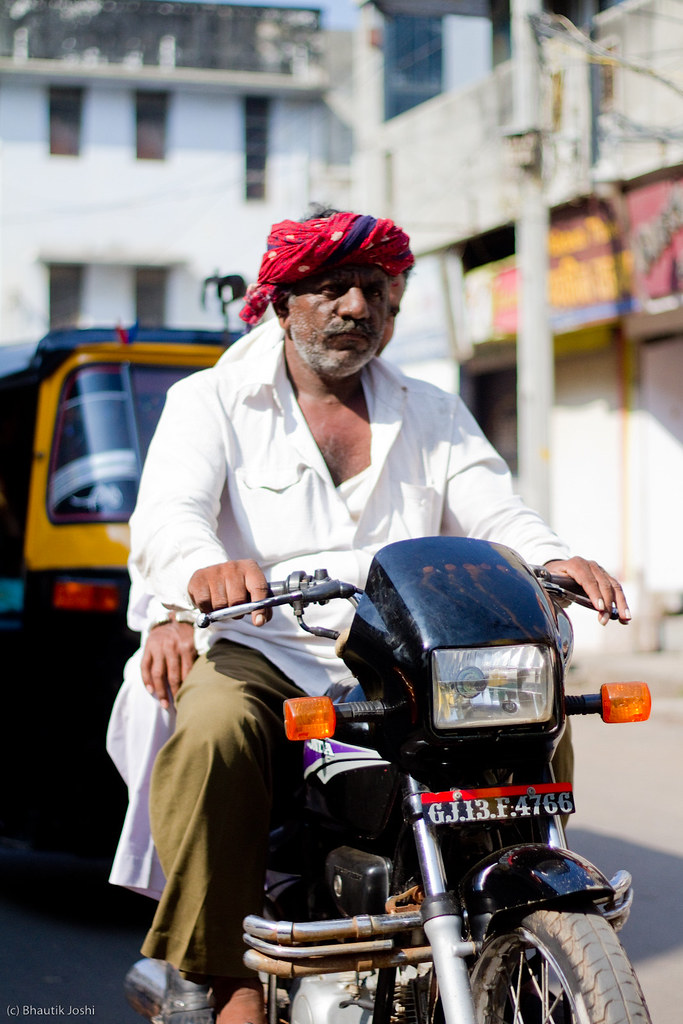

At the Rajkot bus terminal.
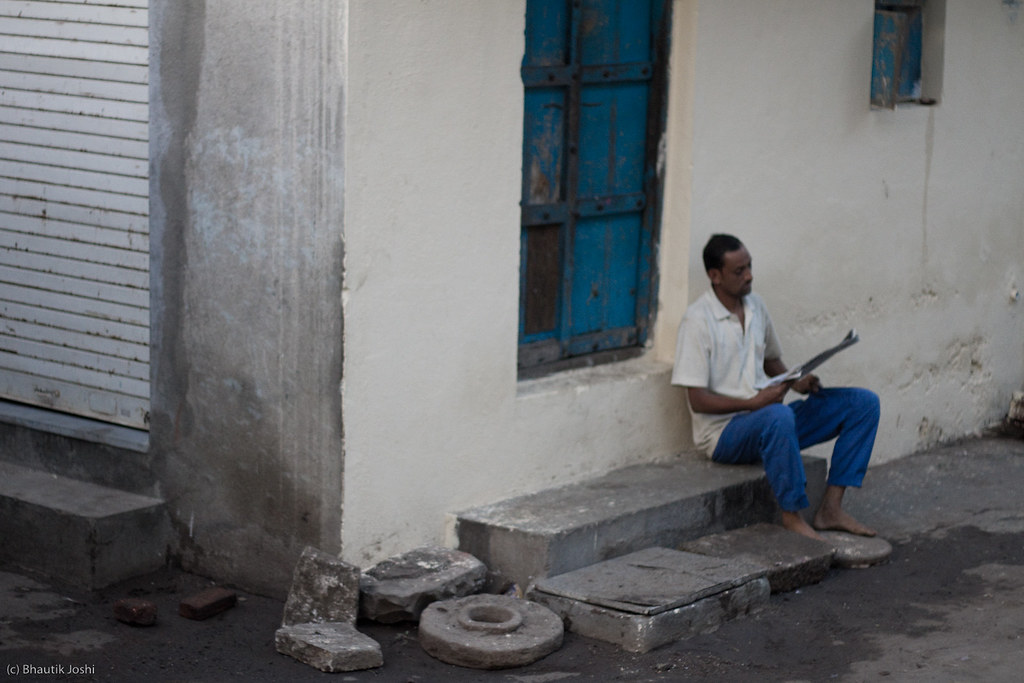
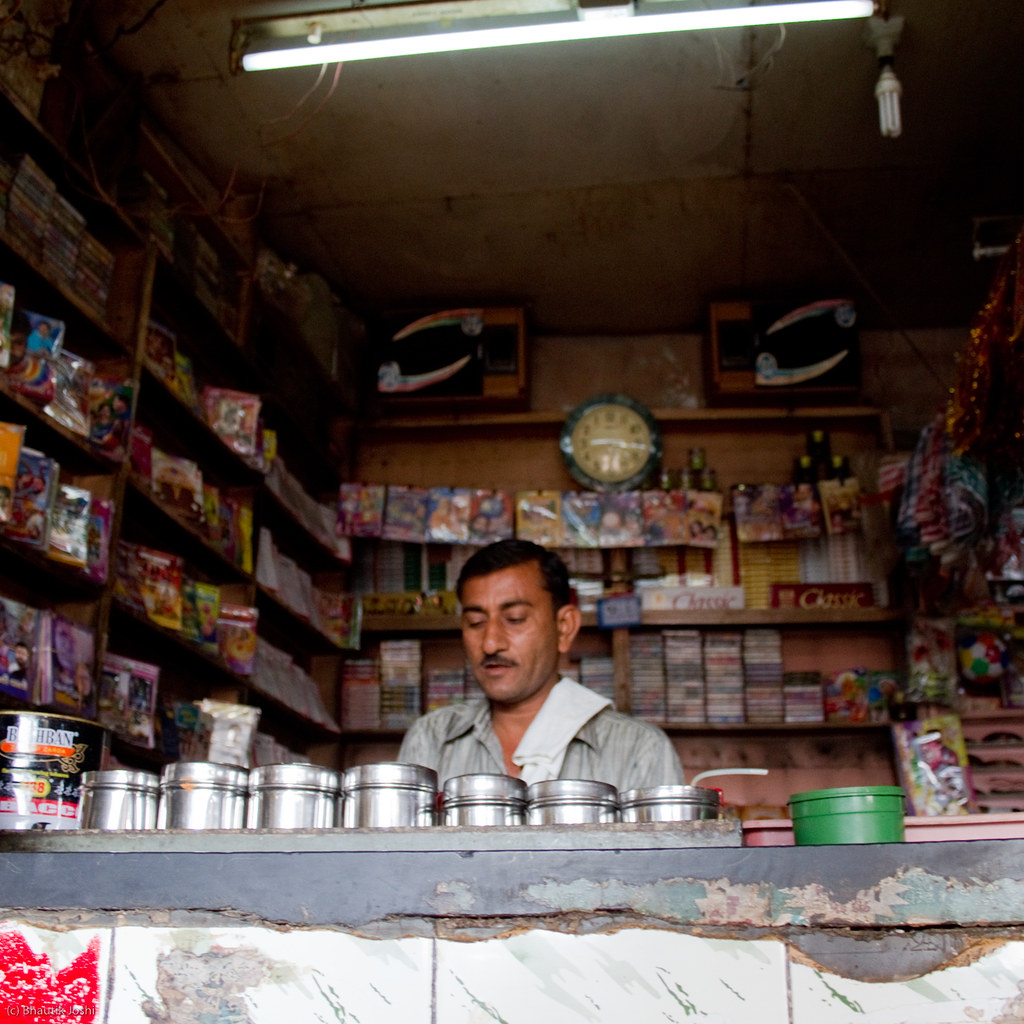
Just to be clear here: this isn't a dark-skinned Terry Jones. He's dealing in paan, a slightly carcinogenic but nevertheless delicious mix of spices and chewy bits wrapped up in betel nut leaves.